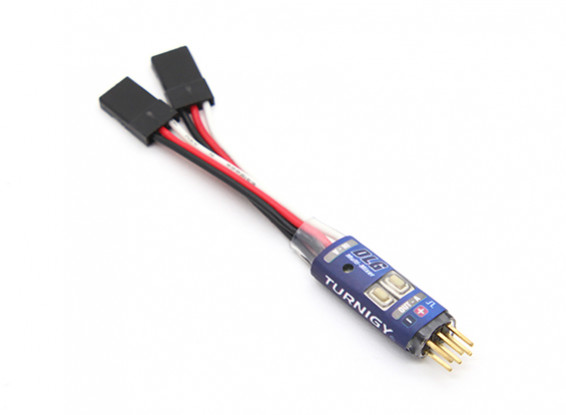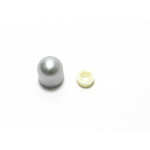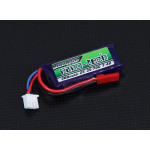Turnigy DLG Papillon / V-queue multi-Mixer

Turnigy DLG Papillon / V-queue multi-Mixer
Discus lancement planeurs sont beaucoup de plaisir, mais si vous avez un émetteur de base que vous êtes absent dehors sur une caractéristique importante, le contrôle de carrossage. Le Turnigy DLG Multi-Mixer fait justement cela. Ce dandy peu papa doo à portée de main, vous permet d'avoir le contrôle de votre aileron, et utilisez la manette des gaz comme le contrôle de carrossage. Cela vous permet de modifier les ailerons de neutre, recourbés, ou pendaient en fonction des conditions de levage. Peut-être que le vent est mort, vous voulez exécuter beaucoup de carrossage pour obtenir le meilleur ascenseur, puis le vent se lève, mettre en place les ailerons pour nettoyer la cellule pour une meilleure pénétration du vent. En outre, si vous avez besoin pour Rudder / ascenseur navire, le Turnigy DLG Multi-Mixer a intégré en mode V-queue pour mélanger les entrées de direction et de profondeur correctement.
Pour installer en utilisant le mode de carrossage, il suffit de brancher vos deux servos dans l'appareil, puis brancher l'appareil dans l'aileron et les canaux d'étranglement. Après avoir réglé votre servo marche arrière, vous devriez être prêt à utiliser les ailerons comme volets.
Caractéristiques:
• modes de contrôle de Camber et V-queue
• Installation simple
• Petit et léger
Spécifications:
Dimensions: 30x11x5.5mm (non compris les fils)
Poids: 3g
-
 Turnigy DLG Multi Mixer
Turnigy DLG Multi Mixer
Inscrivez-vous pour télécharger des vidéos, s'il vous plaît se connecter ou s'inscrire
Inscrivez-vous pour écrire des critiques, s'il vous plaît se connecter ou s'inscrire
Walter | Acheteur vérifié
-
Overall
-
Quality
-
Value
Won't Work for Elevons
Jul 02, 2017
QuentinP | Acheteur vérifié
-
Overall
-
Quality
-
Value
Good one
Oct 28, 2016
| Acheteur vérifié
-
Overall
-
Quality
-
Value
Certified Buyer Rated
Sep 28, 2015
Greg | Acheteur vérifié
-
Overall
-
Quality
-
Value
Customer Rated
May 31, 2015
Vincent275uk | Acheteur vérifié
-
Overall
-
Quality
-
Value
Customer Rated
Feb 07, 2015
Vincent275uk | Acheteur vérifié
-
Overall
-
Quality
-
Value
Customer Rated
Feb 07, 2015
Vincent275uk | Acheteur vérifié
-
Overall
-
Quality
-
Value
Customer Rated
Feb 07, 2015
Vincent275uk | Acheteur vérifié
-
Overall
-
Quality
-
Value
Customer Rated
Feb 07, 2015
Danielek | Acheteur vérifié
-
Overall
-
Quality
-
Value
Customer Rated
Aug 20, 2014
| dlgmixer.pdf | Download [310] |
Inscrivez-vous pour télécharger des fichiers.
S'il vous plaît se connecter ou s'inscrire pour commencer à aider les amateurs maintenant!












